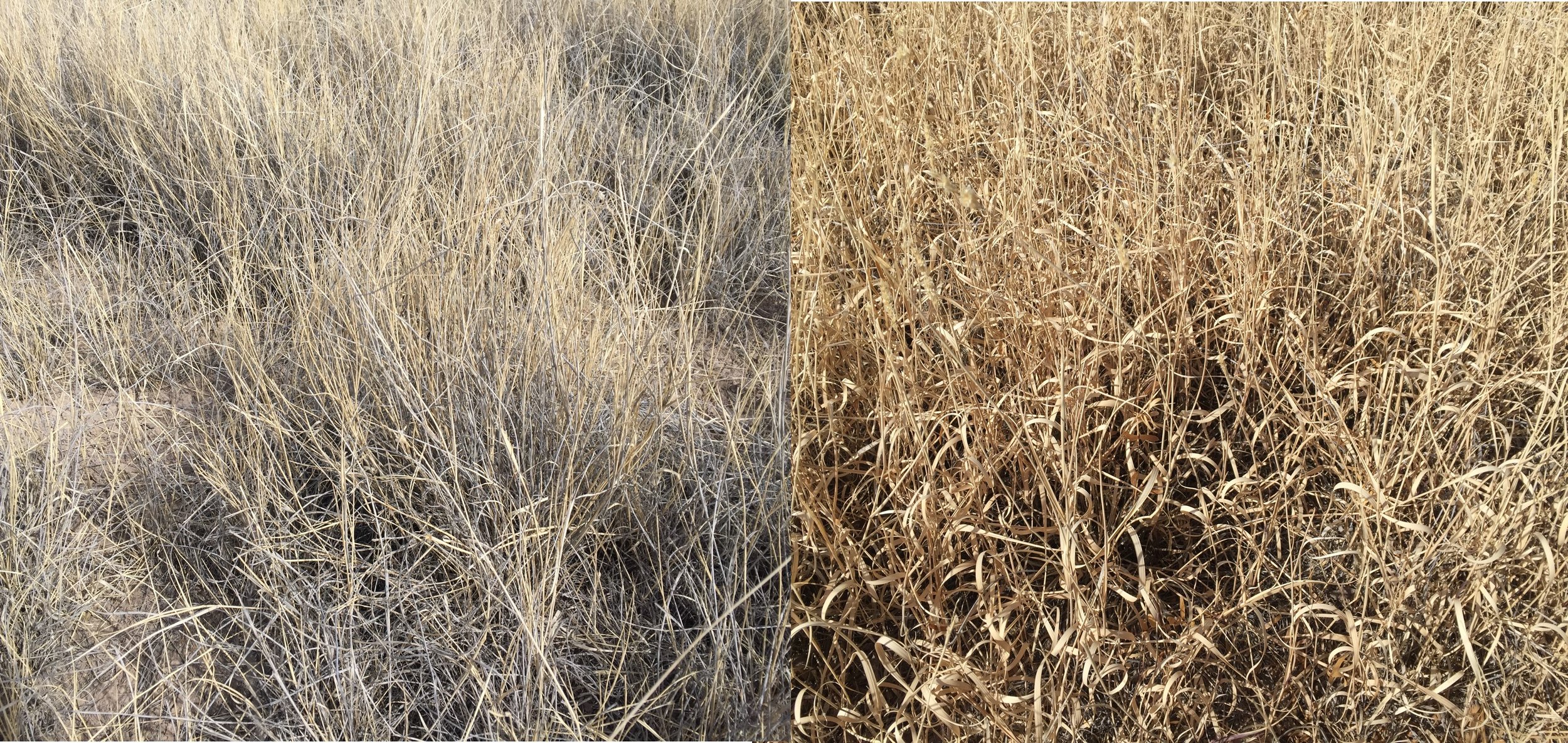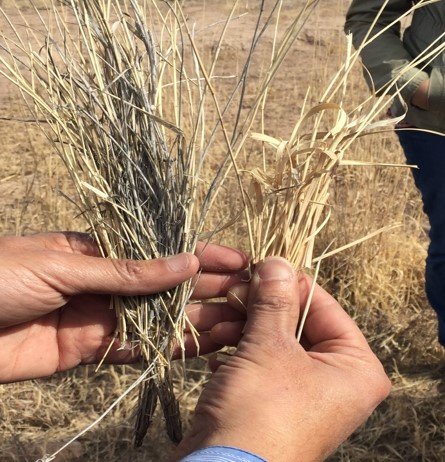Most perennial grasses under conventional management are hungry, thirsty and slowly dying due to overgrazing (livestock staying too long or returning too soon) or lack of grazing (too much selectivity or not enough animals to make an impact on all plants). Perennial grasses under conventional management act as annual grasses, staying green only during the rainy season, and struggling during the dry season.
The leaf-to-stem ratio is a critical indicator of the health of our grasslands and soils. As we improve the quality of our perennial grasses, they grow wider leaves to capture more sunlight, thus are able to feed increasing populations of soil microbiology.
We work towards having more leafy perennial grasses.

Tobosa grass on the same location, same precipitation, different management (LEFT Conventional; RIGHT Regenerative)

Tobosa grass on the same location, same precipitation, different management (LEFT Conventional; RIGHT Regenerative)


